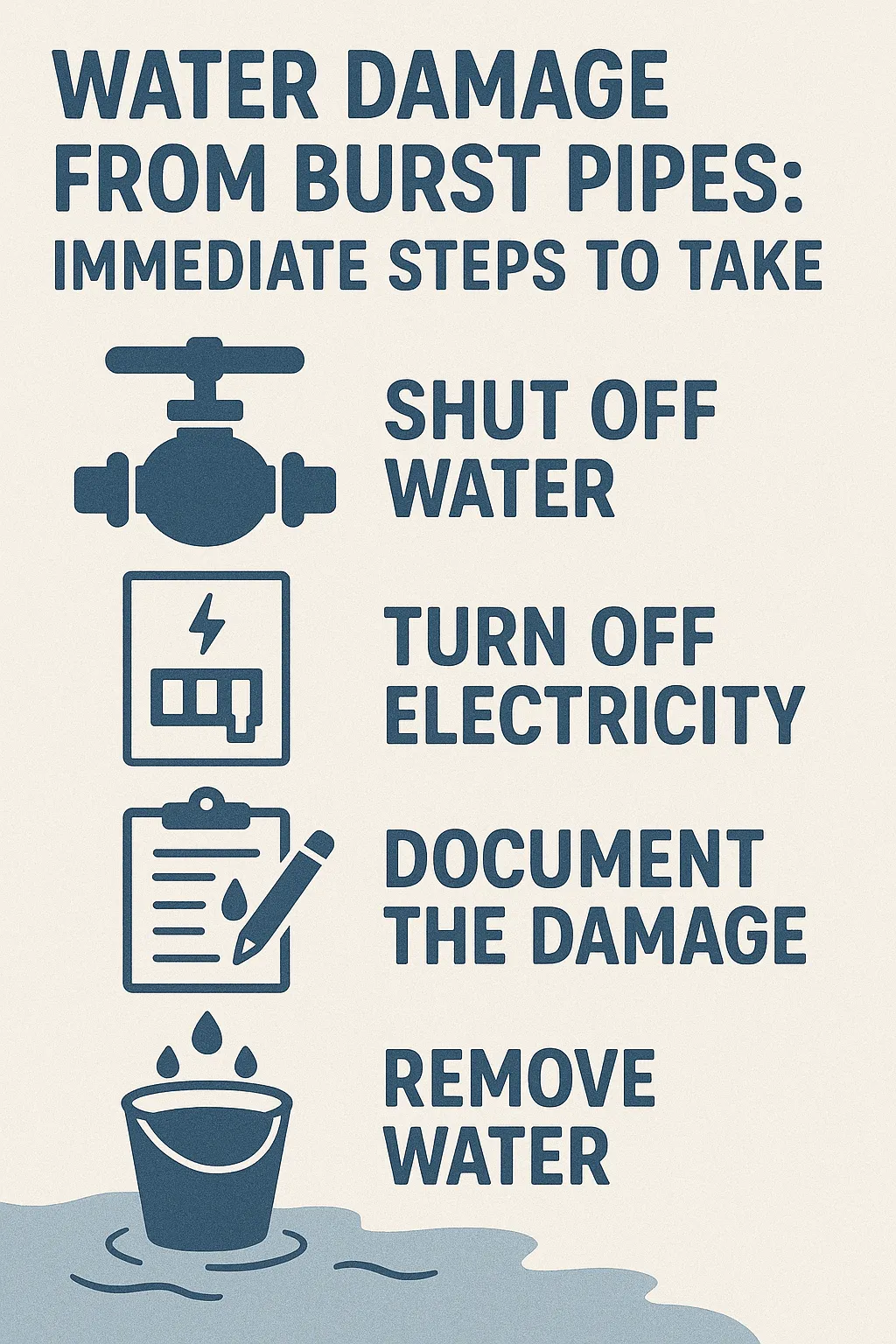Restoration Advice & Tips | Restoration 1 St. Louis Blog

Water Damage from Burst Pipes: Immediate Steps to Take
Water Damage from Burst Pipes: Immediate Steps to Take
Water damage from burst pipes is a serious issue that can quickly lead to costly repairs and structural problems. Whether caused by freezing temperatures, aging plumbing, or unexpected pipe failures, burst pipes can release gallons of water into your home within minutes. Knowing what to do immediately after discovering a burst pipe can help minimize the damage and protect your property.
Common Causes of Burst Pipes
Freezing Temperatures: When temperatures drop below freezing, the water inside pipes can expand, leading to cracks and bursts.
Aging or Corroded Pipes: Over time, pipes can weaken due to corrosion, making them more susceptible to bursting.
High Water Pressure: Excessive water pressure can strain pipes, causing them to rupture.
Clogs and Blockages: Severe clogs increase pressure within the pipes, potentially leading to breaks.
Shifting Foundations: Structural shifts can cause misalignment and stress on plumbing, resulting in bursts.
Improper Pipe Installation: Poor installation can lead to weak joints that are more likely to fail under pressure.
Immediate Steps to Take After a Pipe Bursts
1. Shut Off the Water Supply
Locate the main water shut-off valve and turn it off immediately to stop the flow of water. If you’re unsure where it is, check near your water meter or ask your plumber in advance to prevent delays in emergencies.
2. Turn Off the Electricity (If Necessary)
If water has reached electrical outlets, appliances, or the circuit breaker panel, turn off the electricity to prevent shocks or fires. If you can’t safely access the breaker box, call an electrician for assistance.
3. Drain the Pipes
Open all faucets and flush toilets to remove any remaining water from the plumbing system. This helps relieve pressure and prevents further leaks.
4. Document the Damage
Take clear photos and videos of the affected areas, including damaged floors, walls, furniture, and personal belongings. Proper documentation is essential for insurance claims.
5. Remove Excess Water
Use towels, mops, and wet/dry vacuums to soak up as much standing water as possible. The quicker you remove water, the less damage it will cause.
6. Start Drying Out the Area
Set up fans, dehumidifiers, and open windows to improve air circulation. This helps prevent mold growth and structural weakening caused by prolonged moisture exposure.
7. Contact a Professional Water Damage Restoration Service
Calling a professional restoration team in St. Louis ensures a thorough cleanup and prevents long-term issues such as mold growth and structural damage. Experts have the equipment and knowledge to handle water damage efficiently.
Preventing Future Burst Pipes
Insulate Exposed Pipes: Wrap pipes in unheated areas with insulation to prevent freezing during winter.
Keep the Heat On: Maintain indoor temperatures above 55°F, especially if you’re away from home.
Fix Leaks Promptly: Small leaks can weaken pipes over time, increasing the risk of bursting.
Regulate Water Pressure: Use a pressure regulator to ensure water pressure stays within a safe range.
Schedule Regular Inspections: Have a plumber inspect your plumbing system annually to identify potential weak points.
Conclusion
Water damage from burst pipes can be devastating, but taking immediate action can significantly reduce the impact. By shutting off the water, drying the area, and contacting professionals in St. Louis, you can prevent extensive damage and costly repairs. Additionally, proactive maintenance and winter preparation can help minimize the risk of future pipe bursts, keeping your home safe year-round.
